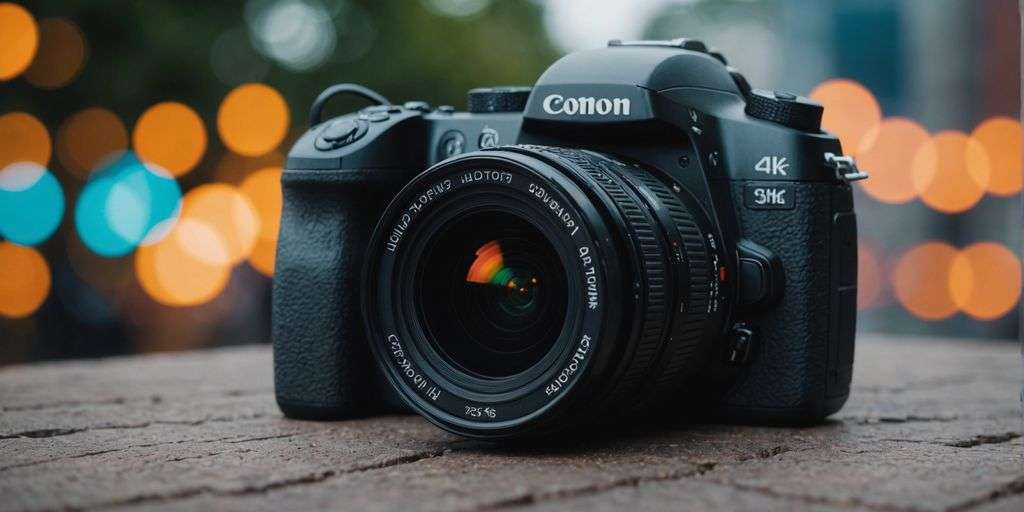Unmatched Clarity and Detail
The Power of Pixel Density
High-definition cameras are celebrated for their ability to capture stunningly detailed footage. The high pixel density allows for the visualisation of fine details, intricate structures, and subtle nuances, making every scene crystal clear.
Capturing Fine Details
Whether you’re shooting landscapes, portraits, or action sequences, 4K resolution ensures every detail is vividly rendered. This level of detail is particularly beneficial for applications like CCTV installation, where capturing every nuance is crucial for enhanced security.
Ideal for Large Displays
4K cameras are perfect for large displays, providing unmatched image quality that remains sharp and detailed even on big screens. This makes them ideal for presentations, home theatres, and professional settings where clarity is paramount.
Unmatched clarity and detail are the hallmarks of 4K technology, making it a game-changer in various fields.
Enhanced Editing Capabilities
Greater Flexibility in Post-Production
The high resolution of 4K footage offers greater flexibility in post-production. Filmmakers and content creators can crop, zoom, and manipulate footage without losing quality. This allows for more creative expression and experimentation.
Superior Colour Grading
With 4K, colour grading becomes a more precise art. The increased pixel density provides a richer palette, enabling editors to achieve more accurate and vibrant colours. This is especially beneficial for projects requiring detailed colour work.
Cropping Without Losing Quality
One of the standout features of 4K is the ability to crop footage without sacrificing detail. This is particularly useful for clearview projects where maintaining high visibility is crucial. Editors can zoom in on specific areas of the footage, ensuring that the final product remains sharp and clear.
Evolution of 4K Technology
From Niche to Mainstream
4K technology has come a long way from its early days as a niche product. Initially, it was only available to professional filmmakers and high-end studios. Today, it has become more accessible and affordable, reaching a wider range of users, including amateur enthusiasts. This shift has been driven by advancements in technology and increased demand for high-quality visuals.
Affordability and Accessibility
The cost of 4K cameras and equipment has significantly decreased over the years. What was once a luxury is now within reach for many consumers. This affordability has opened up new opportunities for content creators, allowing them to produce high-quality videos without breaking the bank. The increased accessibility has also led to a surge in creative projects and innovations.
Diverse Applications
4K technology is not limited to just filmmaking. It has found applications in various fields, including sports broadcasting, medical imaging, and security systems. For instance, electric fence installation services by security guru now utilise 4K cameras to provide exceptional service and ensure client satisfaction. The versatility of 4K technology makes it a valuable tool in many industries.
The evolution of 4K technology has transformed the way we capture and view content, making high-definition visuals a standard expectation in today’s world.
Comparing 4K and Full HD

Resolution Differences
Full HD cameras capture video at a resolution of 1920 x 1080 pixels, while 4K cameras offer a resolution of 3840 x 2160 pixels. This means 4K has four times the number of pixels, resulting in much higher clarity and detail. This makes 4K footage ideal for large displays and high-quality viewing experiences.
Impact on Viewing Experience
The increased pixel count in 4K provides a more immersive and engaging viewing experience. Whether you’re watching a movie, sports event, or vlog, the sharpness and detail of 4K can elevate the experience to a whole new level. Colours appear more vibrant, and fine details are more noticeable.
Use Cases for Each Resolution
- Full HD: Suitable for smaller screens and general use, such as online videos and standard TV broadcasts.
- 4K: Best for large screens, professional video production, and high-quality streaming services.
Choosing between Full HD and 4K depends on your specific needs and the type of content you consume or produce. While Full HD is adequate for many applications, 4K offers superior quality for those who demand the best.
Conclusion
In wrapping up, it’s clear that both HD and 4K cameras have their own unique benefits. HD cameras are great for everyday use and offer good quality at a lower cost. On the other hand, 4K cameras provide stunning detail and clarity, making them perfect for professional work or anyone who wants the best possible image quality. Whether you’re a filmmaker, a photographer, or just someone who loves capturing moments, understanding the differences between HD and 4K can help you choose the right camera for your needs. So, take your time, consider your options, and happy shooting!
Frequently Asked Questions
What is the main difference between HD and 4K resolution?
The primary difference is the number of pixels. HD resolution is 1920 x 1080 pixels, while 4K resolution is 3840 x 2160 pixels, which is four times the number of pixels in HD. This results in much sharper and clearer images.
Why is 4K better for large displays?
4K resolution offers more pixels, which means more detail and clarity. On larger screens, this higher resolution prevents the image from looking blurry or pixelated, providing a better viewing experience.
Can I crop 4K footage without losing quality?
Yes, because 4K footage has a higher resolution, you can crop the video and still maintain good image quality. This is particularly useful during editing when you need to zoom in on specific details.





